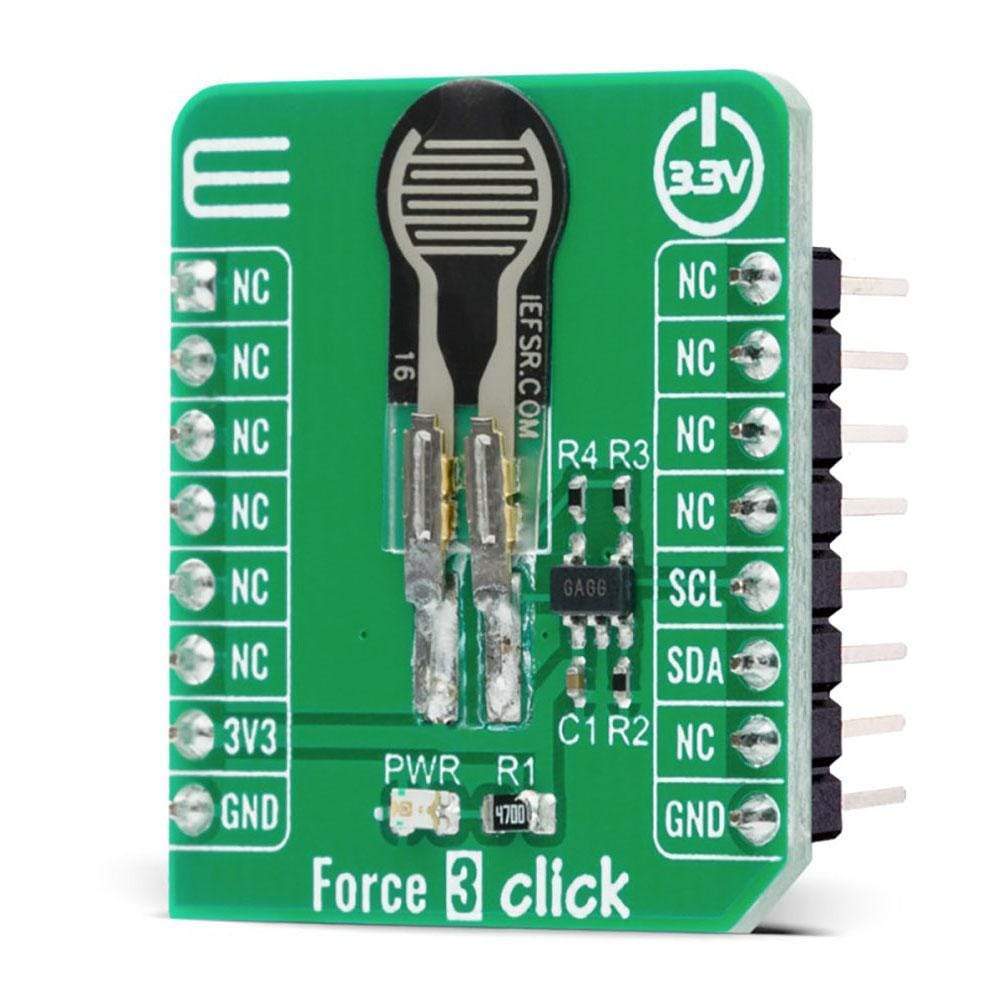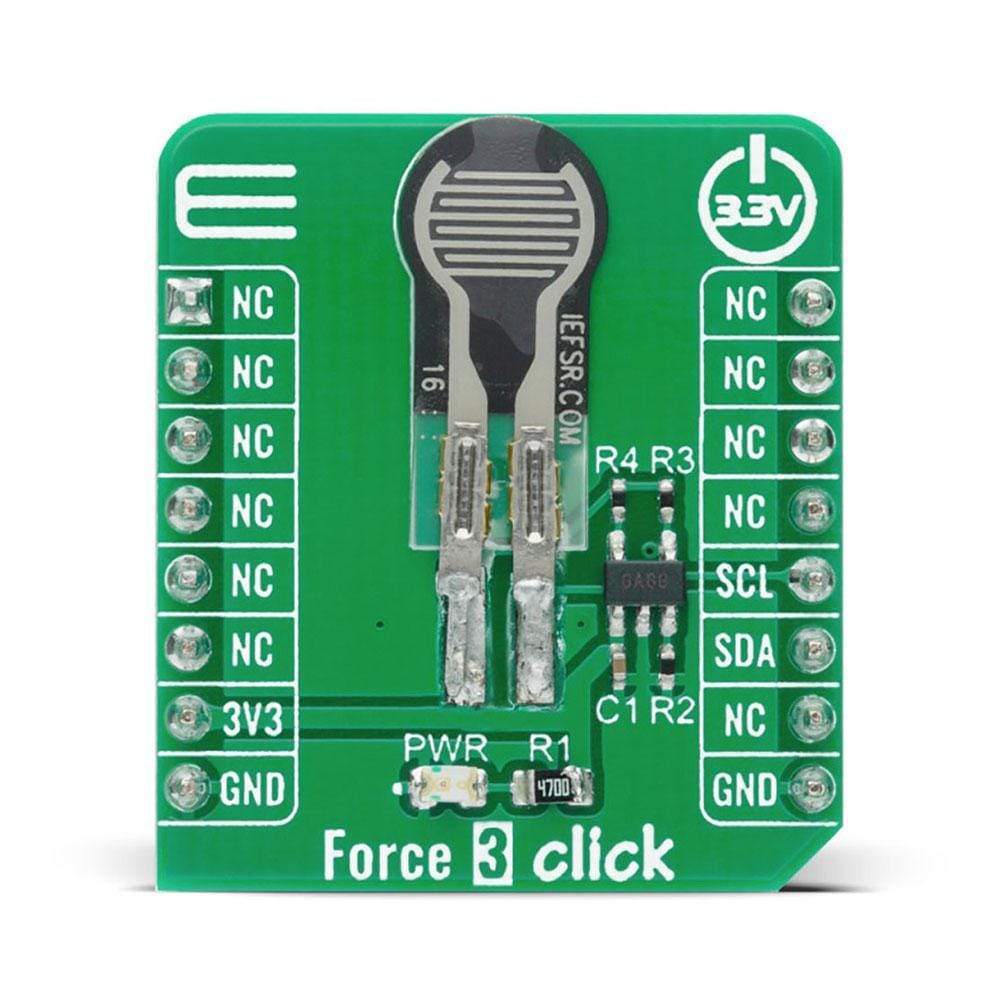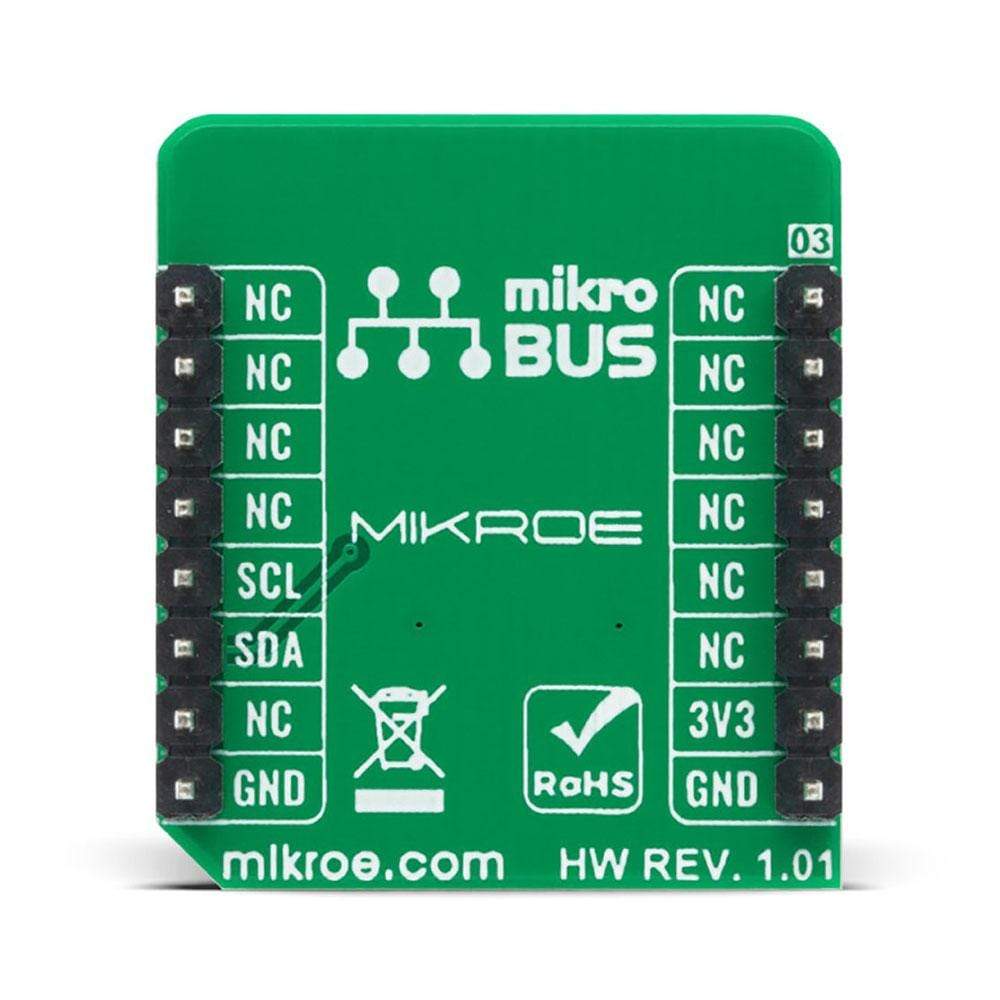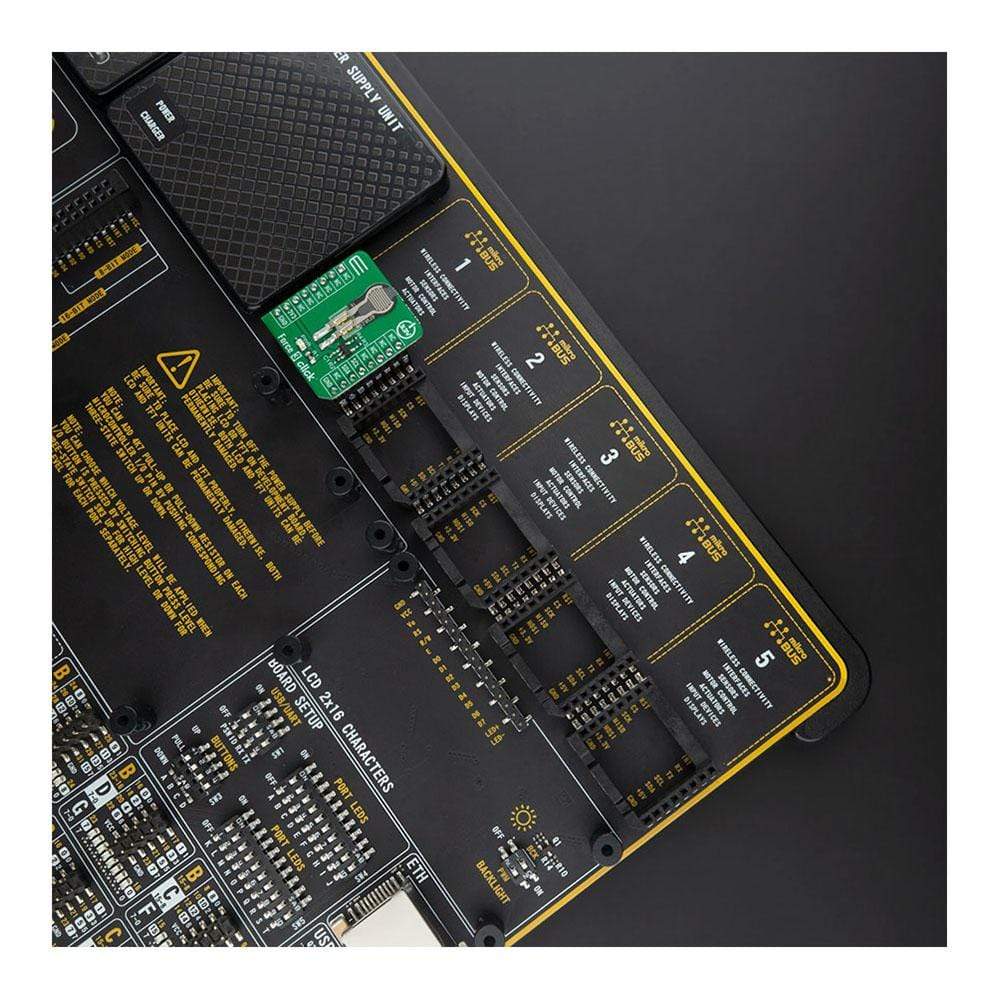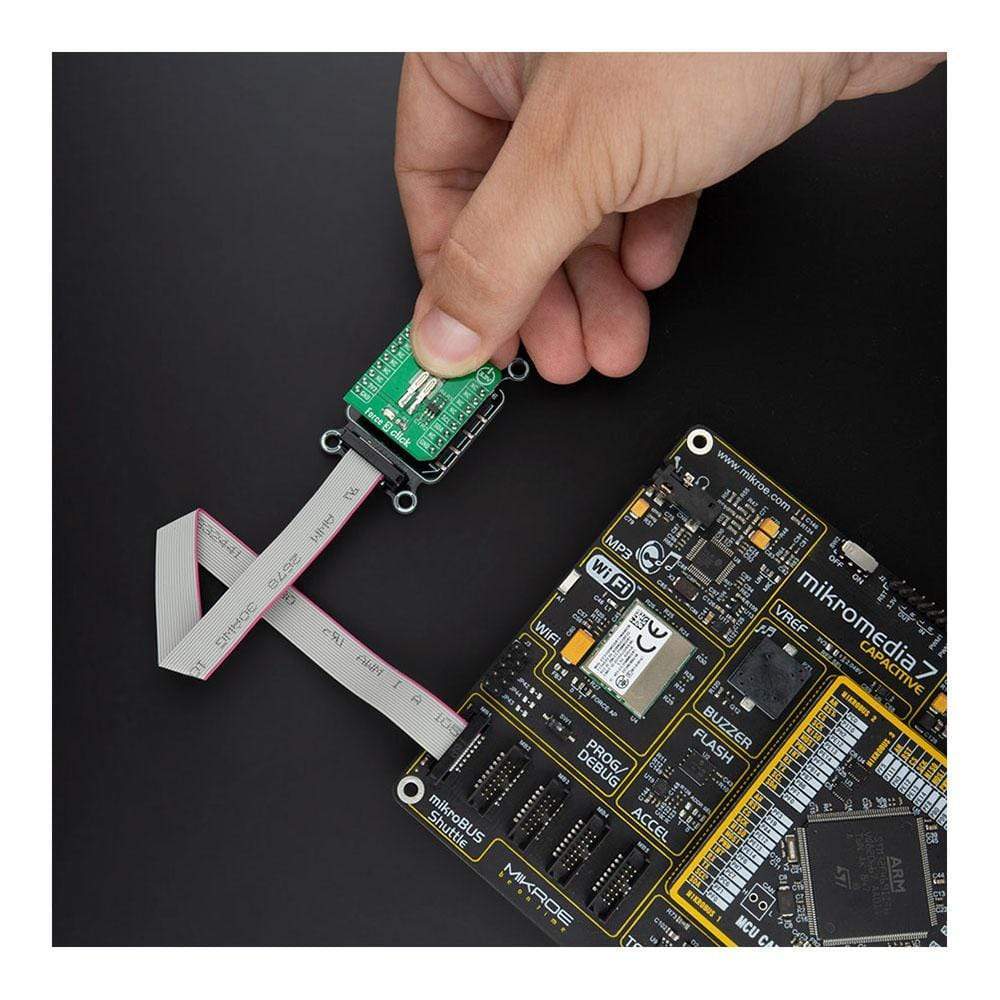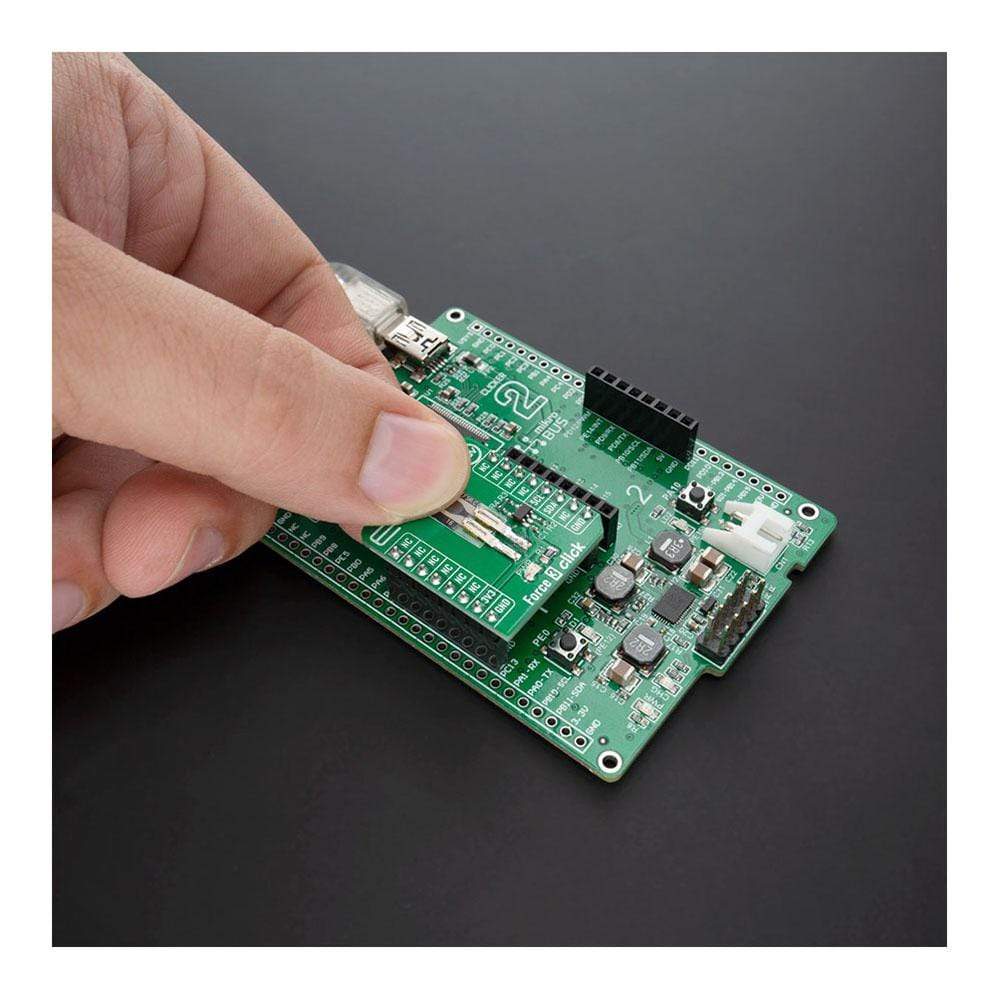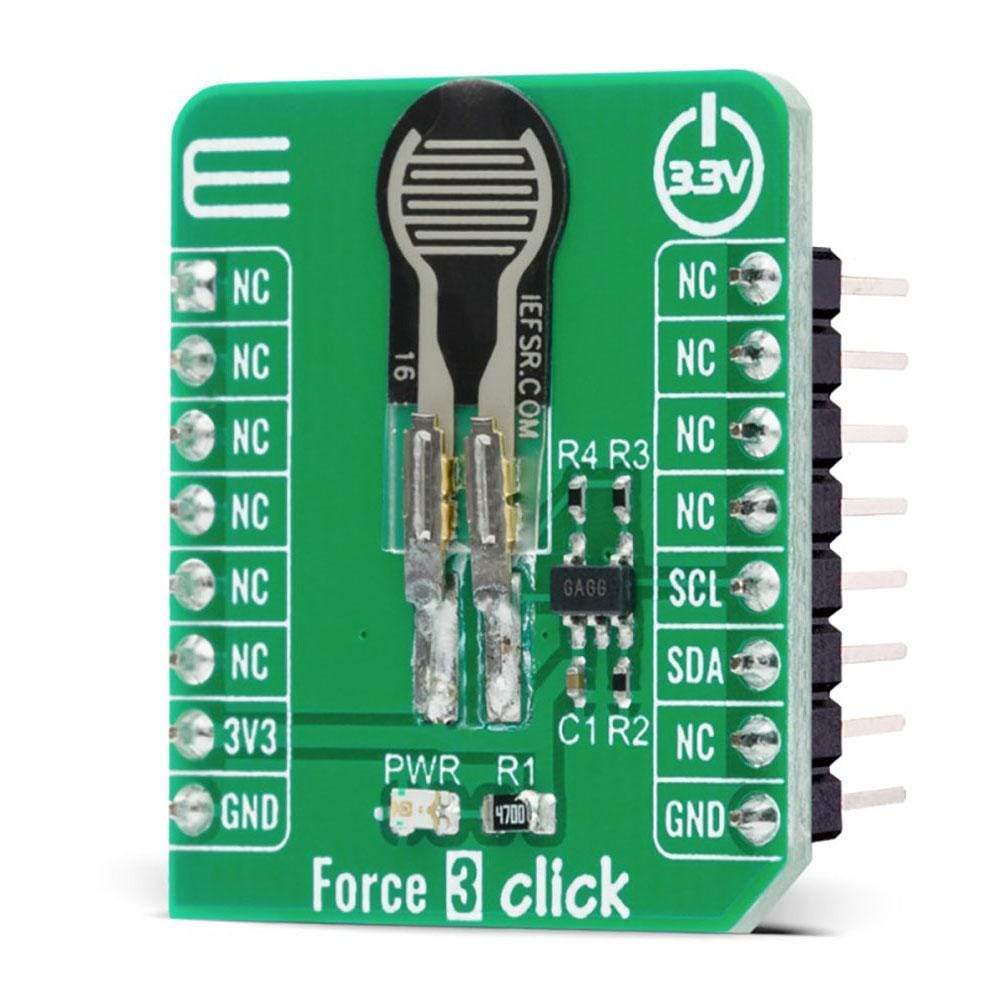
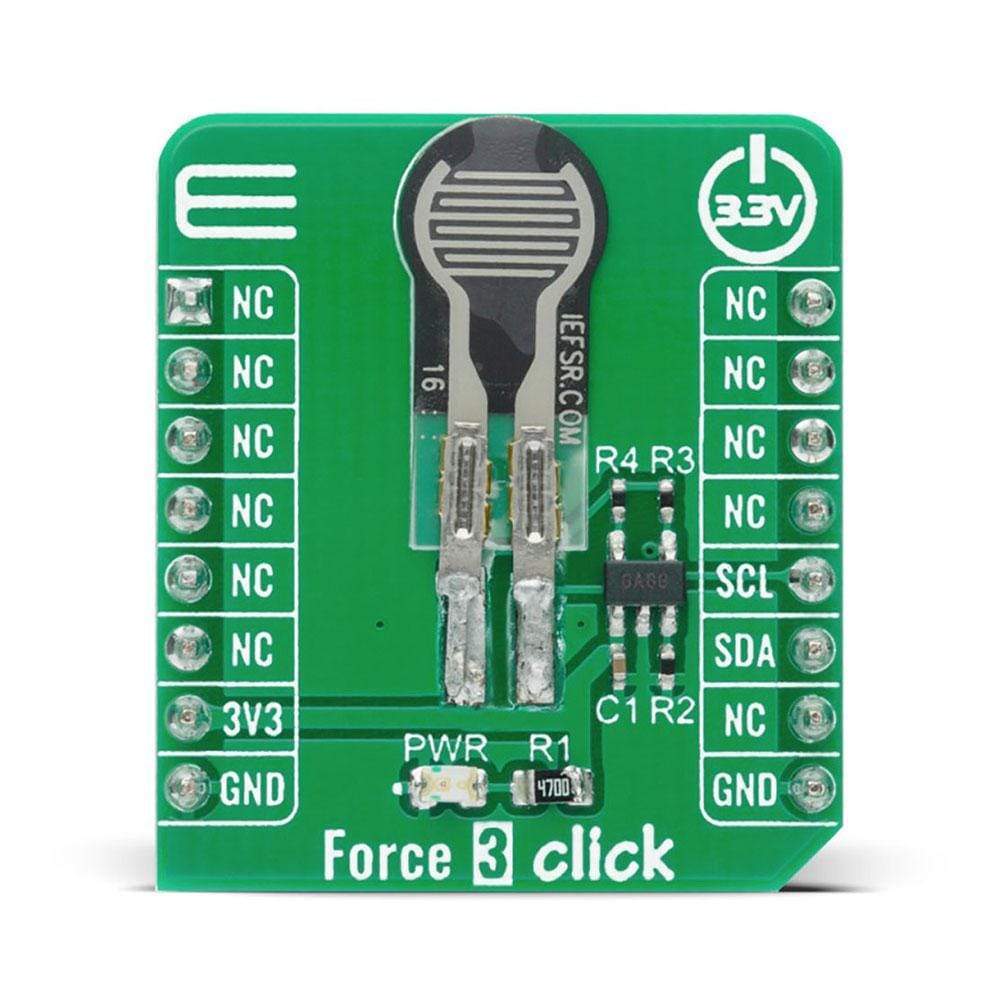
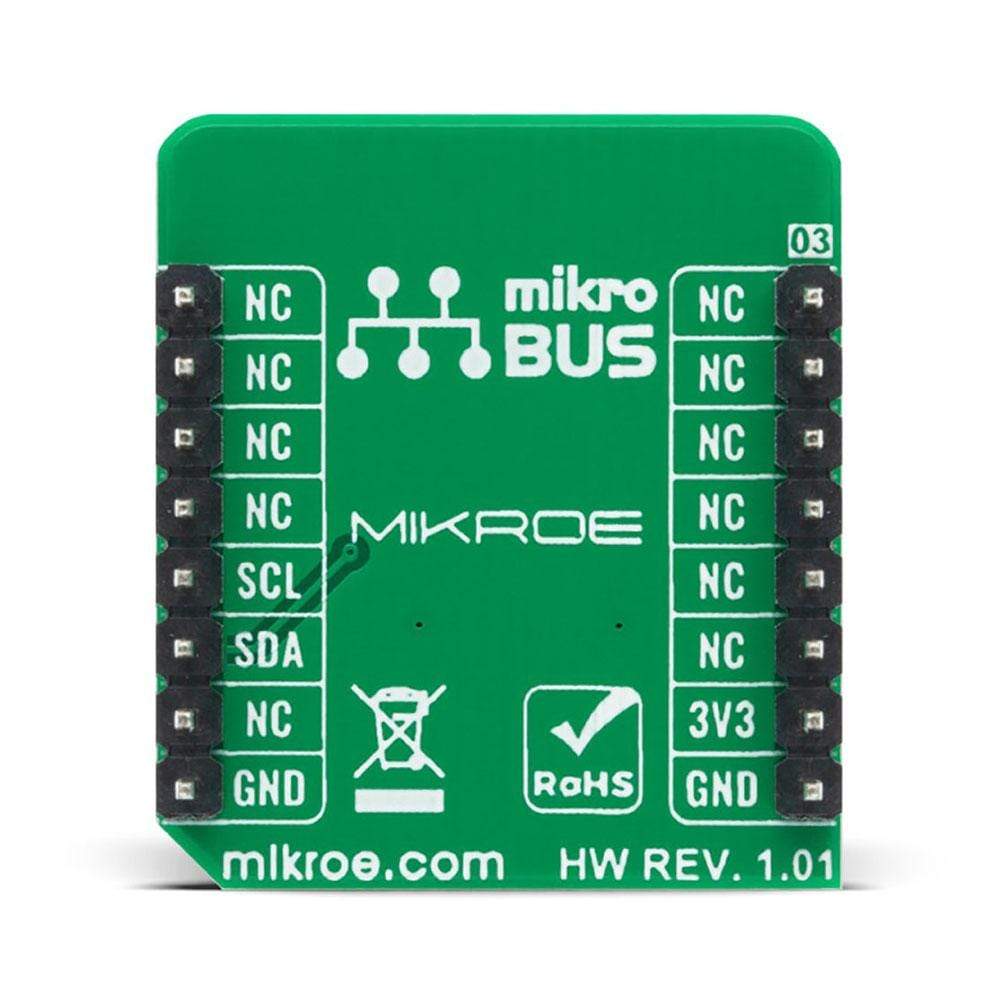
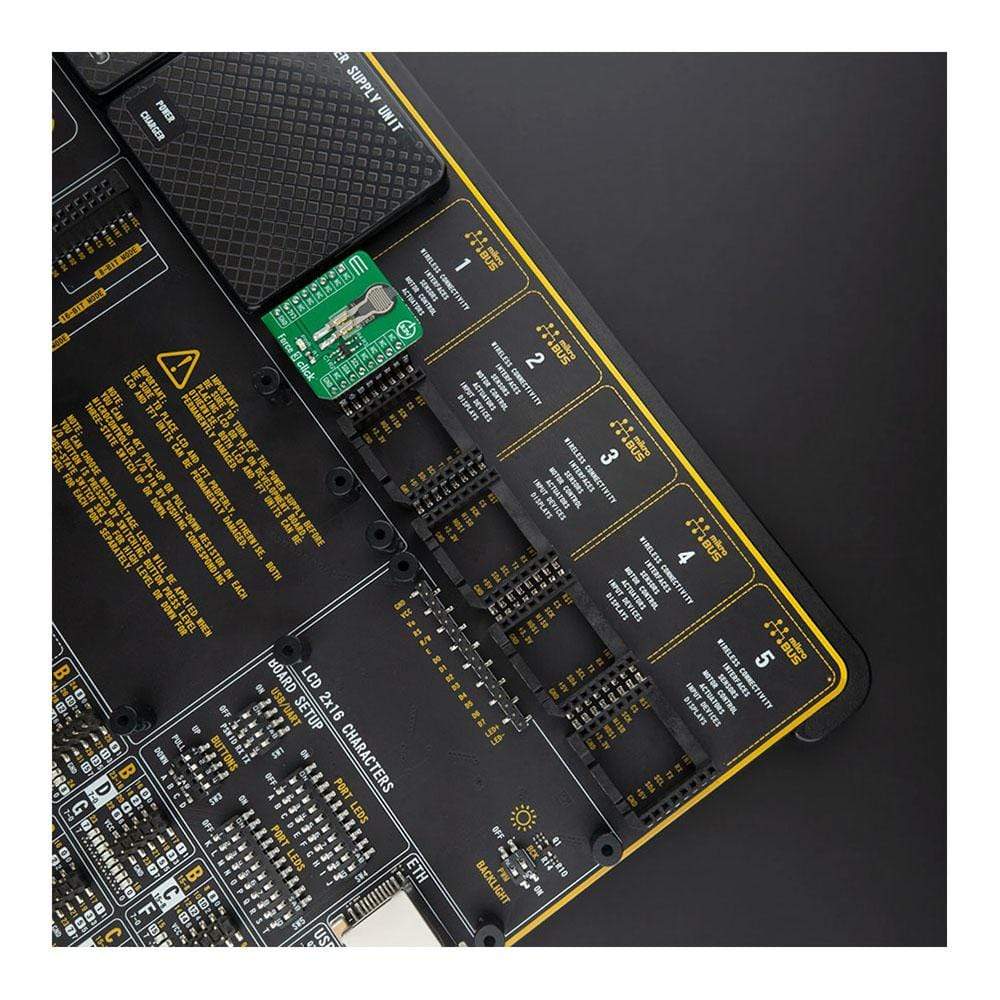


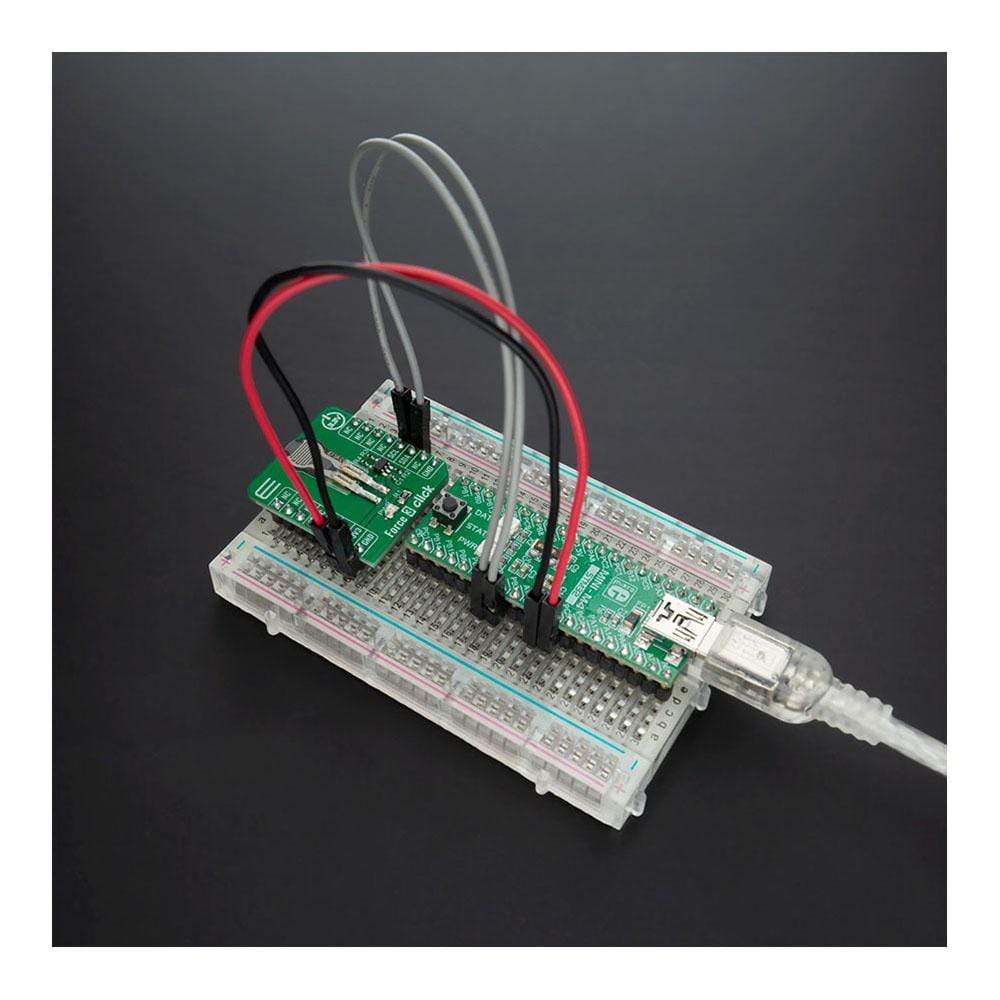
Overview
The Force 3 Click Board™ is a compact add-on board with circuitry for implementing Force Sensing Resistor into your projects whose resistance changes when a force, pressure, or mechanical stress is applied. This board features an FSR 400 series 34-00004 single zone Force Sensing Resistor from Interlink Electronics, a robust polymer thick film (PTF) device that exhibits a decrease in resistance with an increase in force applied to the surface of the sensor. Simple and easy to integrate, ultra-thin, and cost-effective, Force 3 Click has an actuation force as low as 0.2N and a sensitivity range up to 20N. It also provides a 2-Wire I2C compatible control interface using an MCP3221, low-power 12-bit resolution A/D converter. This Click Board™ is optimized for use in human-machine interface devices including automotive electronics, medical systems, industrial controls and robotics.
The Force 3 Click Board™ is supported by a mikroSDK compliant library, which includes functions that simplify software development. This Click Board™ comes as a fully tested product, ready to be used on a system equipped with the mikroBUS™ socket.
Downloads
La carte Force 3 Click Board™ est une carte complémentaire compacte avec circuit permettant d'implémenter une résistance de détection de force dans vos projets dont la résistance change lorsqu'une force, une pression ou une contrainte mécanique est appliquée. Cette carte est dotée d'une résistance de détection de force à zone unique série FSR 400 34-00004 d'Interlink Electronics, un dispositif à couche épaisse en polymère (PTF) robuste qui présente une diminution de la résistance avec une augmentation de la force appliquée à la surface du capteur. Simple et facile à intégrer, ultra-mince et économique, la Force 3 Click a une force d'actionnement aussi faible que 0,2 N et une plage de sensibilité jusqu'à 20 N. Elle fournit également une interface de contrôle compatible I2C à 2 fils utilisant un convertisseur A/N MCP3221 à faible consommation et à résolution 12 bits. Cette carte Click Board™ est optimisée pour une utilisation dans les dispositifs d'interface homme-machine, notamment l'électronique automobile, les systèmes médicaux, les commandes industrielles et la robotique.
La carte Force 3 Click Board™ est prise en charge par une bibliothèque compatible mikroSDK, qui comprend des fonctions qui simplifient le développement logiciel. Cette carte Click Board™ est un produit entièrement testé, prêt à être utilisé sur un système équipé du socket mikroBUS™.
| General Information | |
|---|---|
Part Number (SKU) |
MIKROE-4149
|
Manufacturer |
|
| Physical and Mechanical | |
Weight |
0.017 kg
|
| Other | |
Country of Origin |
|
HS Code Customs Tariff code
|
|
EAN |
8606027380136
|
Warranty |
|
Frequently Asked Questions
Have a Question?
Be the first to ask a question about this.

